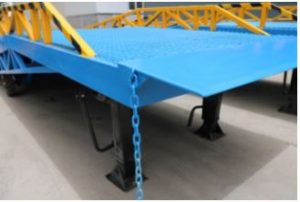Workplace Plumbing Safety Tips
Following the correct guidelines when performing any plumbing ask is essential to ensuring complete safety for yourself and whomever you are doing the work for. Knowing about your responsibilities as a employee and also if you are an employer, knowing what you have to do is critical to be sure you are abiding by the law with all the work you, and your company does.
Main Employer Responsibilities
-
the provision and maintenance of plant and systems of work that are safe and without risk to health (this includes the supply of all necessary personal protective equipment)
-
safety in the use, handling, storage and transport of articles and substances
-
the provision of information, instruction, training and supervision as necessary to ensure the health and safety at work of employees
-
-
the provision of access to and exit from the workplace that is safe and without risk
-
the provision of adequate facilities and arrangements for welfare at work.
-
provide a health and safety policy statement
-
undertake regular risk assessments
Main Employee Responsibilities
-
take reasonable care at work of your own health and safety and that of others who may be affected by what you do or do not do
-
do not intentionally or recklessly interfere with or misuse anything provided for your health and safety
-
co-operate with your employer on health and safety matters. Assist your employer in meeting their statutory obligations
-
bring to your employer’s attention any situation you think presents a serious and imminent danger
-
bring to your employer’s attention any weakness you might spot in their health and safety arrangements.
As a plumber it is necessary you understand what types of actions are to be taken by you or your employee in order to keep the workplace or worksite safe at all times, there are statutory regulations in place in order to keep safety to a maximum and to make sure you do not have any law suits coming your
way.
Some of the actions taken to keep safety to a high are risk assessments, method statements and permit to work statements. The permit to work statement is a list of checks which you would carry out before taking on any dangerous plumbing jobs
like going up high to fix a broken pipe.
When
on site it is important to lay down a list of requirements for safety. If you are on a plumbing job which may take you a few days, it is essential to make sure your plumbers read these before working on the site. Some regulations to take into consideration can be found below.
generally ensuring a safe place of work
-
precautions against falls from height or into excavations
-
protection against falling objects
-
protection against structural collapse (while work is taking place), i.e. the building falling down! safeguards when working in excavations
-
prevention of drowning (falling into water)
-
provision of safe traffic routes (on sites)
-
prevention and control of emergencies (site emergency evacuation procedures, etc.)
-
provision of welfare facilities – WCs, washing facilities, canteens/rest areas, shower facilities (if required)
-
provision of site-wide issues – clean and tidy sites, adequate lighting, constant and fresh air supply, etc.
-
training, inspection and reports – proper training of staff, use of properly trained staff to do the work, proper supervision of staff and monitoring the work carried out by staff to ensure it is carried out in a safe manner.
Plumbing safety tips
To ensure you always stay safe when working, it is best to follow these simple, yet somewhat obvious instructions.
-
Do not walk under a ladder that has somebody working up it
-
Wear the correct safety equipment (ie boots, hard hats etc.)
-
Always make sure to not work with plumbing issues near electric whilst power is on, turn all power off to prevent anything tragic happening
-
Make sure you have received full training on the job you are about to undergo
-
Do not work if tired as many times we have seen work going wrong due to sleep deprivation
-
Follow the correct health and safety guidelines (mentioned above)
-
Be sure to use the correct tools for the job to ensure you complete it safely
Author Bio
This article was written by Dan Mawson who is the owner and founder of Multicore emergency plumber wigan.
He is an avid blogger, plumber, electrician and web developer hoping to share his knowledge through the web.
